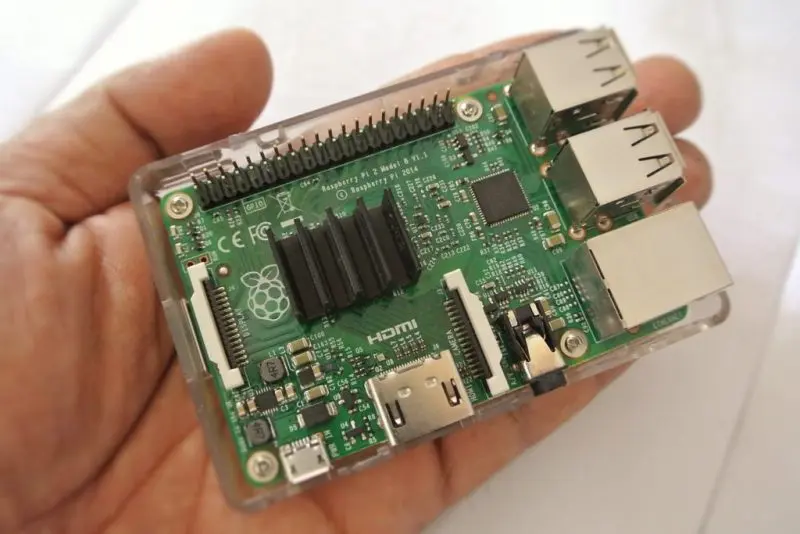
Raspberry Pi under voltage detected message appears or doesn’t start, don’t worry this is all due to inadequate power supply.
This is a guide on How to Solve Raspberry Pi under-voltage detected problem with the help of adequate Power supply for Raspberry Pi.
This is a serious issue sometimes it can also occur when you are using the recommended power supply for Raspberry Pi.
If it still indicates under-voltage detected, there is another fix for that and that I am going to discuss in this tutorial.
Troubleshoot Raspberry Pi under voltage detected Issue
It is very important to deal with this issue because pi starts to act strange.
Unpredictable problems will occur and it can harm your Pi.
Your Phone charger nor your PC/laptop USB port is going to provide adequate power for your Pi. That Is why you need to change the power supply.
Replace Raspberry Pi Power Supply
(Recommended)
The easiest and recommended way to power a Raspberry Pi which can solve the under-voltage dented issue is to power it via a Micro USB port by using the recommended power supply for Raspberry Pi.
The recommended input voltage must be 5v and it must not go below 4.9v.
In this case, I would like to recommend use power supplies which outputs 5.25v because it will make up for any voltage drops caused over the resistance of the USB cable which is connected to the power supply and the Raspberry Pi.
The best way to replace your old power supply is to buy a new power supply from the official website of Raspberry Pi.
Here is the list of few recommended power supplies for Raspberry Pi according to Pi version:-
Raspberry Pi Universal Power Supply: Link out https://www.raspberrypi.org/products/raspberry-pi-universal-power-supply
recommended for Raspberry Pi 1, 2 and 3
Raspberry Pi 15.3W USB-C Power Supply: Link Out https://www.raspberrypi.org/products/type-c-power-supply
recommended USB-C power supply for Raspberry Pi 4
Avoid using USB Hubs
USB hubs are not a reliable power transmitter at all, it doesn’t support to back power.
It can cause unexpected program failure and sometimes startup (boot) failure too, it can also several unpredictable problems like SD card corruption, kernel panics and Raspberry Pi low voltage detected Issue.
Replace the micro USB cable
Many peoples complain even after replacing the power supply it is still showing the lightning bolt image on the top right corner of the screen for them, USB cable might be the problem.
It is very important to have a high-quality micro USB cable to power up the Raspberry Pi because cables have conductors inside them which provide little resistance.
Most of the devices are tolerant of voltage drops caused due to low quality micro USB cable but it is not the same with the Raspberry Pi, it requires more power.
Re-install Raspberry Pi Operating System
After changing the power supply and replacing the micro USB cable, if it is still showing under voltage issue please try to reinstall the operating system again.
According to my experience, I have seen this method work for me.
Disable Raspberry Pi Under-voltage Warning
(Not Recommended)
If all fails you can still remove the warring but this method is not recommended by me do it at your own risk.
Works on Raspbian OS only.
Open /boot/config.txt file.
sudo nano /boot/config.txtAdd below, save and close the file.
# Disable under-voltage warning
avoid_warnings=1Reboot the Pi to apply the change.
sudo reboot
Avoid using GPIO pins to power up Raspberry Pi’s
One last thing Pi can also be powered through GPIO but I do not recommend using GPIO pins to power up Raspberry Pi’s because it can really damage the Pi.
It has already damaged one of my Pi. What it does is that it bypasses input fuse and your Pi becomes unprotected and if the amount of voltage increases it will surely damage the Raspberry Pi.
This step concludes the guide and I hope that it will surely contribute to solve the Under-voltage issue of Raspberry Pi.
If you have any questions or suggestions regarding this topic then please comment below, I would love to answer your queries.

2 Comments
I’m running a Raspberry PI 24/7 and I power it through GPIOs
To be sure , I made a power supply using a 12V 3A industrial power supply and added a LM7805 to its output to achieve the needed 5V. Typical failure mode of LM78xx is to short input to ground and in this case the 12V power supply will go in protection mode ( 0V output ) or to give an output voltage lower than nominal 5V ( in this case Raspberry may shut down ).
In both cases, the Raspberry is safe
Thank You for this interesting tutorial
Umberto
The “official” power supply is 5.1v – the reason everyone always has problems is because normal power supplies are only 5v, plus the designers of the circuit made some bad decisions (resistors where ferrites belong…)